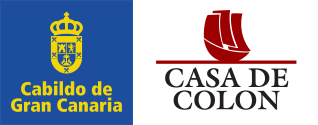Peritaje judicial y arte. Los pintores y el Tribunal de la Real Audiencia de Canarias en la Edad Moderna / Judicial expertise and art. The painters and the Court of the Royal Audience of Canary Islands in the Modern Age
Palabras clave:
perito, pintor, mapa, croquis, expert, painter, map, sketchResumen
El peritaje artístico judicial en Canarias tuvo un considerable desarrollo a lo largo de la Edad Moderna. Algunos de los pintores de mayor relevancia en las islas fueron contratados por la propia Real Audiencia de Canarias o prestaron sus servicios a las partes litigantes para que realizaran croquis, planos o mapas acuarelados con el fin de ilustrar con mayor verosimilitud los datos aportados por testigos, abogados y escribanos. Sus trabajos representan un legado destacado al transmitir imágenes fidedignas de determinados espacios rurales y urbanos, a veces con una excepcional percepción espacial del territorio, toda vez que las pinturas aportan información sobre la densidad de la vegetación, la tipología de los cursos de agua, las formas de ocupación del paisaje, los aprovechamientos agropecuarios o las características edificativas de las viviendas. Si no fuera por esas obras pictóricas, sabríamos mucho menos de los distintos lugares de Canarias que vieron y pintaron en un momento determinado. Un legado etnográfico que los singularizan y subrayan como elementos históricos colectivos de un considerable rango y, a su vez, los diferencian del resto de las producciones pictóricas de esos artistas, basadas en la demanda particular o de colectivos religiosos –santos, retratos de personajes, paisajes–, más propios de su inspiración y talento. / Judicial artistic expertise in the Canary Islands developed considerably throughout the Modern Age. Some of the most important painters in the islands rendered their services to the litigating parties or were contracted by the Royal Court of the islands itself to make their sketches, plans or watercolor maps in order to illustrate with greater plausibility the data provided by witnesses, lawyers and scribes. The work of the aforementioned is a prominent legacy in transmitting reliable images of certain rural and urban spaces, sometimes with an exceptional spatial perception of the territory The paintings provide information on the density of vegetation, the typology of watercourses, the forms of occupation of the landscape, agricultural uses or the building characteristics of the dwellings. The paintings provide information on the density of vegetation, the typology of watercourses, the forms of occupation of the landscape, agricultural uses or the building characteristics of the dwellings. If it were not for those pictorial works, we would know much less about the different places in the Canary Islands that they saw and painted at a certain time. An ethnographic legacy that single out and underline as collective historical elements of a considerable range and, in turn, differentiate them from the rest of the pictorial productions of these artists, based on the particular demand or religious groups–saints, portraits of characters, landscapes–, more typical of their inspiration and talent.








